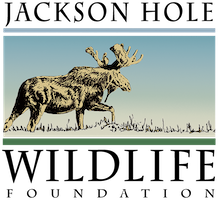Wildlife Friendlier Fencing
Bridging Boundaries and Creating Safer Pathways for Wildlife in the West
Don't Fence Wildlife In
Fences crisscross the West, creating barriers to wildlife movement and posing risks like entanglement. While some fences are necessary for agriculture, simple modifications can balance human and wildlife needs by improving habitat access and safety. Solutions like adjusting wire height or adding smooth wires help animals migrate and thrive.
Jackson Hole Wildlife Foundation’s “Fence Team” and volunteers have removed or modified hundreds of miles of fences, enhancing landscapes for wildlife. You can support this work by volunteering or sponsoring a project. Learn how to make your fences wildlife-friendly and help create safer, more accessible habitats.
Help Us Keep Wildlife Roaming in Wyoming
Volunteer Projects
Check out our Events Calendar and join our team of volunteers to make a positive impact on local ecosystems.
Let Us Remove or Modify Your Fence
We are able to help for a fraction of the cost on all projects.
Get Fencing Facts
Curious about wildlife-friendly fencing rules and how to comply?
Sponsor a Fence Removal: $1,000
It costs $1,000 to remove one mile of fence from the landscape. By donating, you directly support this life-saving work.
Voluntourism: Get Wild Over Fence
Be a voluntourist—give back to the wildlife and wild places that make Jackson Hole unforgettable. Even a small effort leaves a lasting impact.
Did you know?
Outdated fencing harms wildlife, with one big game animal—deer, moose, elk, or pronghorn—dying for every 1.2 miles of fence, often from entanglement or separation from their mothers. To address this, our Wildlife Friendlier Fencing Program has worked with ranchers, landowners, and agencies for 25 years to remove or modify over 268 miles of fence, saving countless animals.
Learn how to make your fence wildlife-friendly today.

Free to Roam
The short film “Free to Roam” documents the Jackson Hole Wildlife Foundation’s Wildlife Friendlier Fencing Program, which celebrates its 29th year in 2025.
Created by Sava Malachowski and Valerie Schramm of Open Range Films, it chronicles the history of the program, the need for the work, and the dedication of hundreds of volunteers!
Jackson Hole Wildlife Foundation
Tax ID # 83-0302830
Office Location:
25 S. Willow St., Suite 10
Jackson, WY 83001
Mailing Address:
PO Box 8042
Jackson, WY 83002
All rights reserved.
Privacy Policy

